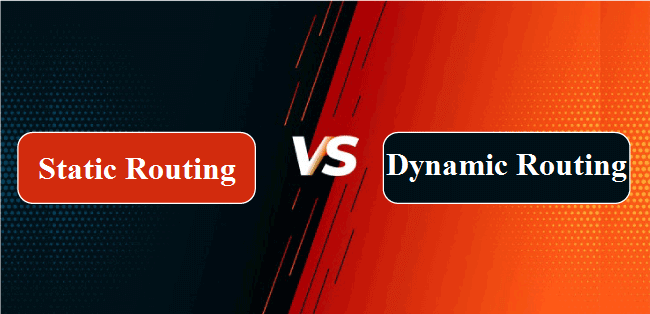Difference between Static and Dynamic RoutingRouting is the technique of determining the optimal path to transmit the data from one location to another. The router may assist in completing this task. It is a device that operates on the network layer of the OSI model and the internet layer of the TCP and IP model. The routing algorithm enables the router to select the best route between the source and the destination. Furthermore, it stores path data in a table known as the routing table. Static and dynamic routing are the two forms of routing. Static routes are configured before any network interactions. In contrast, dynamic routing needs routers to communicate information with other routers to learn about network paths. In this article, you will learn about the difference between static and dynamic routing. But before discussing the differences, you must know about static and dynamic routing with their advantages and disadvantages. What is Static Routing?It is also known as "non-adaptive routing". The network administrator contains the routes in the routing table while using this routing. As a result, the router transfers data from the source to the destination using the administrator-defined route. Routing decisions don't depend on factors like network traffic or topology. Furthermore, static routing doesn't need much bandwidth between routers. The network is also more secure because the network administrator conducts the necessary routing activities. Furthermore, the overall cost of static routing is less. Static routing is also unsuitable for big networks with significant traffic due to the difficulties of manually adding routes to routing tables. Furthermore, the administrator must be familiar with the network to add routes to the routing table manually. Advantages and Disadvantages of Static RoutingThere are various advantages and disadvantages of static routing. Some main advantages and disadvantages of static routing are as follows: Advantages
Disadvantages
What is Dynamic Routing?Dynamic routing is also known as "adaptive routing", and it is a method of automatic routing. In other words, when new routers are introduced to the network, the routing tables change. When a router fails, the routing table automatically modifies to get the destination. As a result, dynamic routing responds to network and traffic changes. This routing method employs dynamic routing algorithms to find new routes to the destination. As a result, all network routers should use dynamic routing protocols that are consistent. Dynamic routing needs fewer routes. Moreover, it offers more accurate results in determining the optimum path based on network changes. However, this routing method needs more bandwidth and offers less security. Advantages and Disadvantages of Dynamic RoutingThere are various advantages and disadvantages of dynamic routing. Some main advantages and disadvantages of dynamic routing are as follows: Advantages
Disadvantages
Main Differences between the Static and Dynamic Routing
Here, you will learn the main differences between Static and Dynamic Routing. Some main differences between Static and Dynamic Routing are as follows:
Head-to-head comparison between Static Routing and Dynamic RoutingHere, you will learn the head-to-head comparisons between Static and Dynamic Routing. The main differences between Static and Dynamic Routing are as follows:
ConclusionOne of the most crucial computer networking operations is routing, in which a data packet is carried from its source to its destination via a route that is optimal for speed and low latency, and the route is chosen with the help of routing techniques. The distinction between static and dynamic routing is in updating table entries. In dynamic routing, protocols are used to automatically update the route information as opposed to static routing, which requires manual updates.
Next TopicDifference between
|
 For Videos Join Our Youtube Channel: Join Now
For Videos Join Our Youtube Channel: Join Now
Feedback
- Send your Feedback to [email protected]
Help Others, Please Share









